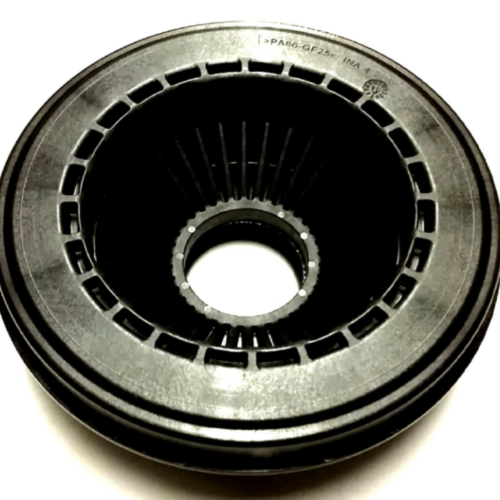Replacing a front hub bearing is a task that can be done with the right tools and a bit of mechanical know-how.
Here are the basic steps to follow:
- Prepare your tools and equipment. You will need a jack, jack stands, lug wrench, socket wrench, torque wrench, and a new hub bearing assembly. Make sure you have the correct size and type of bearing assembly for your vehicle.
- Loosen the lug nuts on the wheel you will be working on, but do not remove them yet. Use the jack to lift the vehicle off the ground and place it on jack stands. Make sure the vehicle is stable and secure before continuing.
- Remove the wheel and brake caliper assembly from the hub. You may need to remove the brake rotor as well, depending on your vehicle.
- Locate the hub assembly and remove the retaining bolts that hold it in place. These bolts may be located on the back of the hub or on the steering knuckle. Use a socket wrench to remove them.
- Carefully remove the hub assembly from the steering knuckle. Be sure not to damage the ABS sensor or any other components while doing so.
- Install the new hub assembly in the reverse order of removal. Make sure the retaining bolts are torqued to the manufacturer’s specifications and that all components are properly aligned.
- Replace the brake rotor and caliper assembly, and then reinstall the wheel. Tighten the lug nuts to the manufacturer’s recommended torque specification.
- Lower the vehicle off the jack stands and remove the jack.
- Test drive the vehicle to ensure that the new hub bearing is functioning properly and that there are no unusual noises or vibrations.
Remember to consult your vehicle’s owner’s manual or a qualified mechanic if you are unsure of any steps or if you encounter any problems during the process.
How To Grease Mountain Bike Front hub bearing?
To grease a mountain bike front hub bearing, you will need some basic tools and supplies.
Here are the steps to follow:
- Remove the front wheel from the bike. Depending on the type of wheel and axle, you may need to use a quick-release skewer or wrenches to loosen and remove the axle nuts or bolts.
- Remove the dust caps or end caps from the hub. These may be held in place with clips, O-rings, or threaded rings. Carefully pry them out or unscrew them, being careful not to damage them.
- Remove the axle from the hub. Depending on the type of hub, you may need to use a cone wrench to loosen the locknuts and cones that hold the bearings in place. Carefully remove the axle and bearings, being careful not to lose any small parts.
- Clean the bearings and bearing races with a rag or brush. Use a degreaser or solvent to remove any old grease or dirt.
- Apply a small amount of fresh grease to the bearing races and the bearings themselves. Be sure to use a high-quality bicycle-specific grease that is compatible with your hub and bearings. Use your fingers or a clean brush to evenly distribute the grease.
- Reassemble the hub, axle, and bearings in the reverse order of disassembly. Make sure the bearings are properly seated and that the cones and locknuts are adjusted correctly. Spin the wheel to check for any roughness or wobbling.
- Replace the dust caps or end caps and reattach the wheel to the bike. Tighten the axle nuts or bolts to the recommended torque specification.
- Test ride the bike to ensure that the front hub is spinning smoothly and quietly. If there are any issues, repeat the greasing process or seek the assistance of a bike mechanic.
